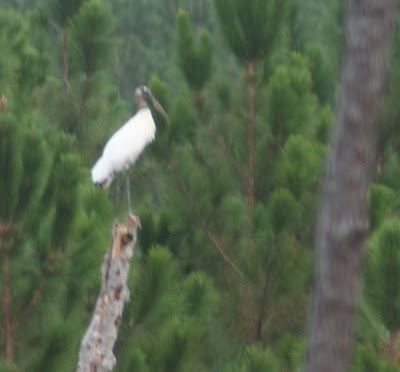Sunday, October 21, 2007
Sunday, October 21
"That's a buzzard, isn't it?" I said.
"No, it's the wrong color!!!" Sarah replied.
I ran for the camera and extended the zoom to the full 300mm. He politely landed in one of the bare trees on the Lane and posed for his picture to be taken.
Buteo jamaicensis - Red-tailed Hawk
Thursday, October 11, 2007
Saturday, October 6, 2007
A breeding pair?

Titbits of Wood Stork facts:
Because of their specialized feeding behavior, wood storks forage most effectively in shallow-water areas with highly concentrated prey.
Wood storks use a variety of freshwater and estuarine wetlands for breeding, feeding, and roosting. Nests must be located in trees in standing water or on islands surrounded by water. Height of nests above the water ranges from 3-7 feet in small trees to over 66 feet in cypress trees.During the nonbreeding season or while foraging, wood storks occur in a wide variety of wetland habitats. Typical foraging sites for the wood stork include freshwater marshes and stock ponds, shallow, seasonally flooded roadside or agricultural ditches, narrow tidal creeks or shallow tidal pools, managed impoundments, and depressions in cypress heads and swamp sloughs.
Friday, October 5, 2007
'Bout Time
We had seen him a couple times before. He was always in flight away from us or too far away to get a good photo. However yesterday evening, he stayed perched on a remains of a old pine tree - allowing us to take several pictures. He remained contently on his post as we departed the Beaver Pond.

Mycteria americana - Wood Stork
Wood Storks have been on the Endangered Species List since 1984. In the early 1900's, there were more than 60,000 of these birds in the U.S. But habitat destruction, development, and pollution caused their population to dwindle to only 4,500 breeding pairs in the 1980's. Wood Storks are stabilizing and now have between 5,000 and 7,000 breeding pairs. The health and existence of the wood stork is a good way for us to measure the health of the wetlands where they live.

